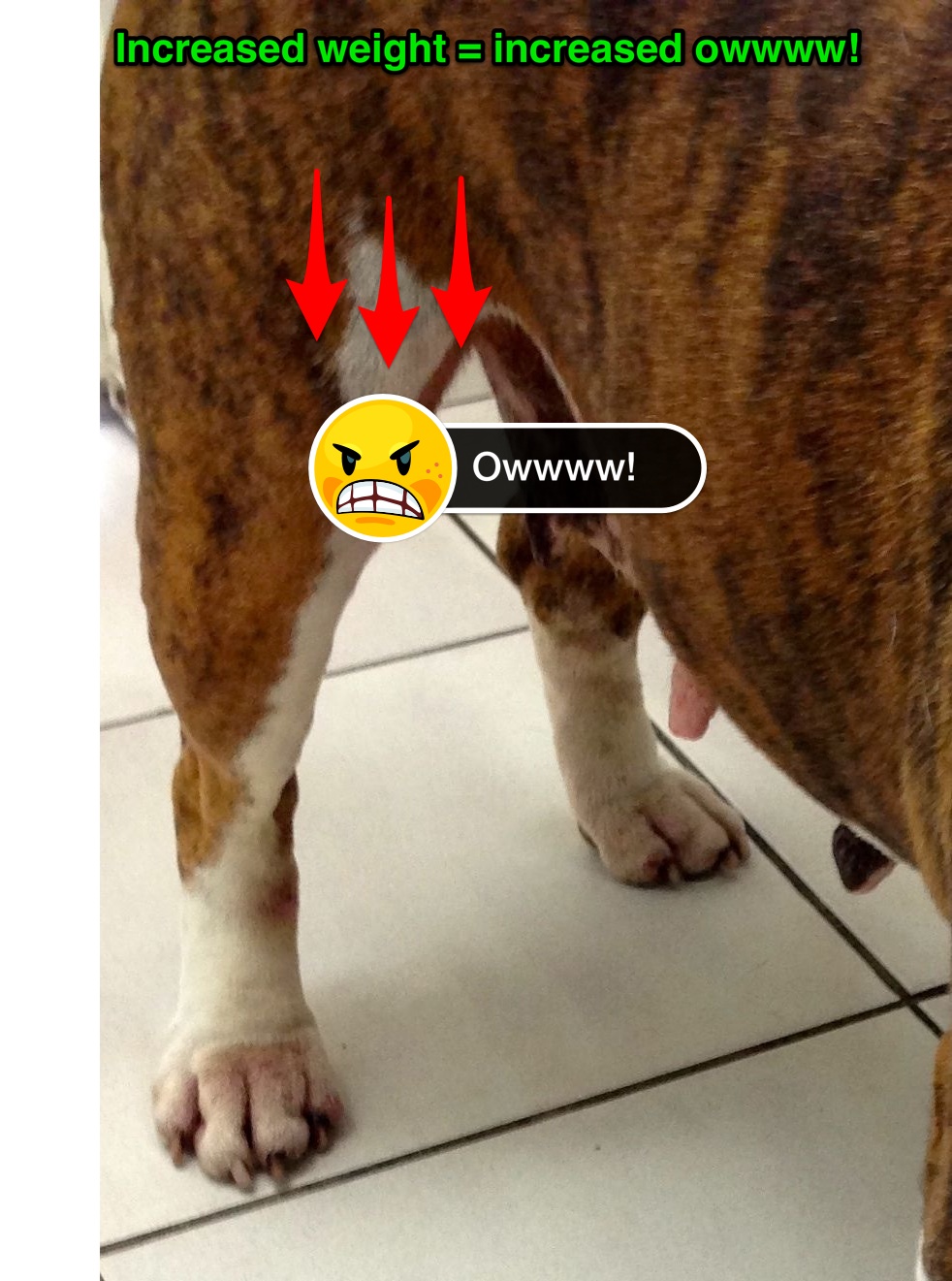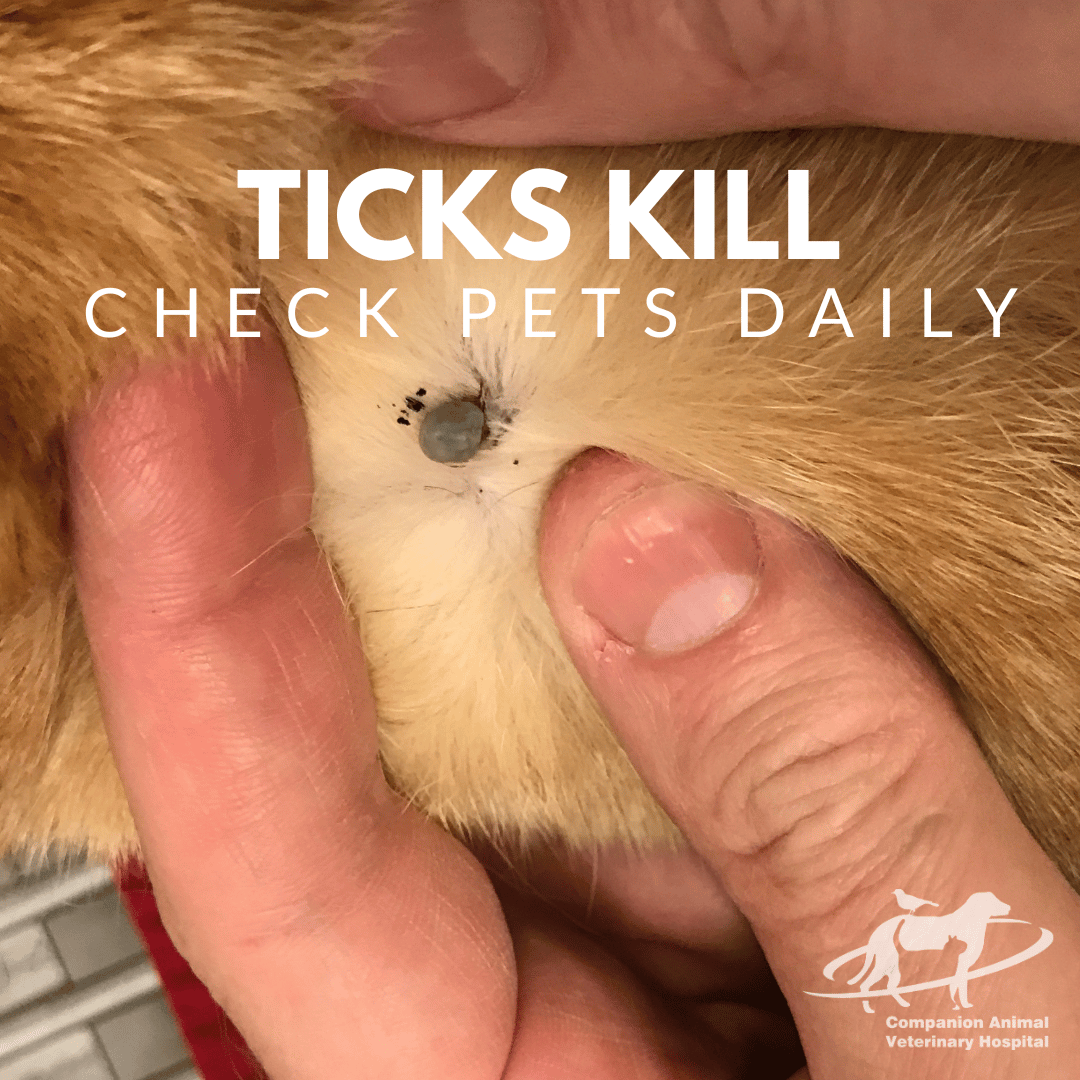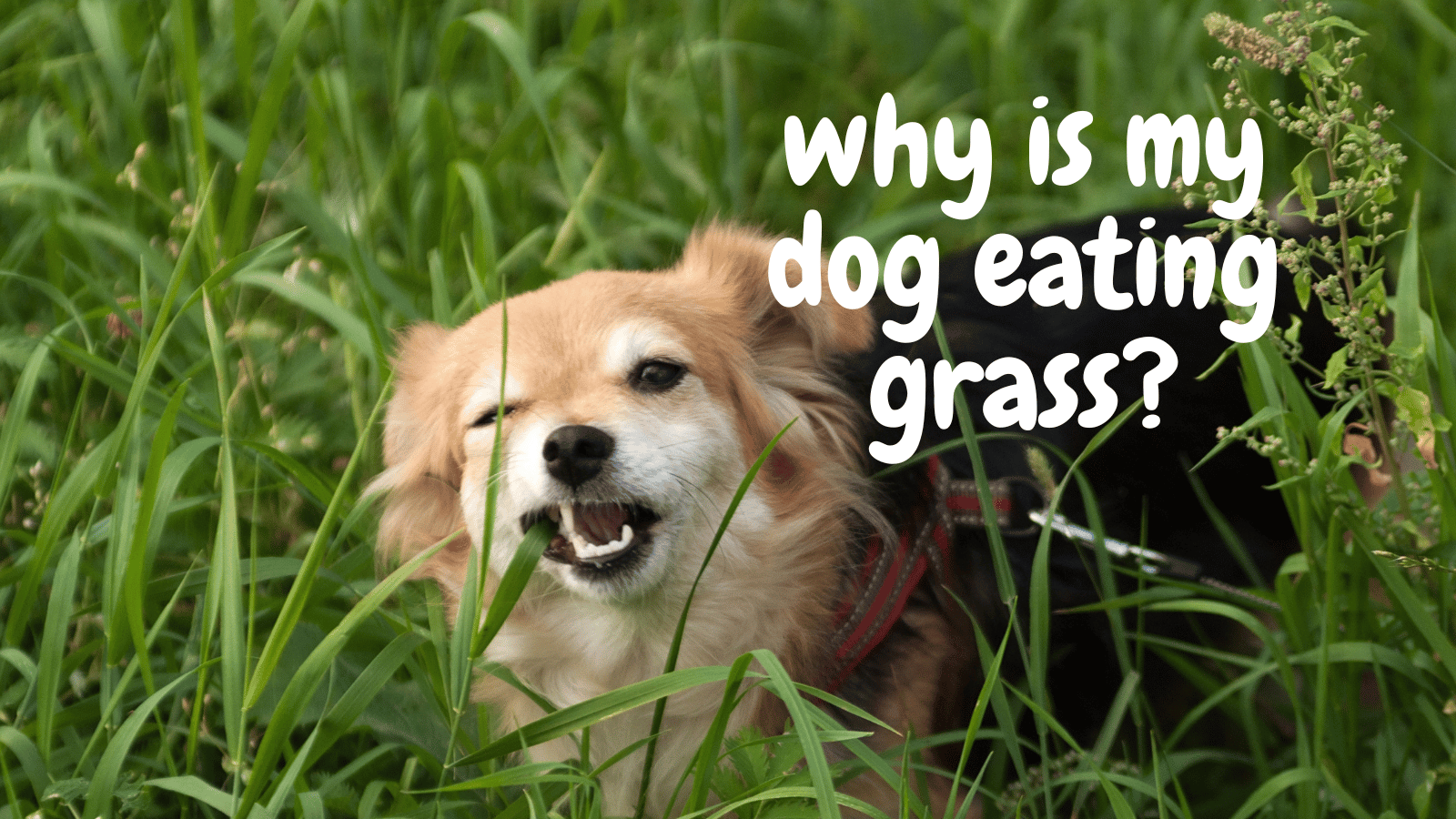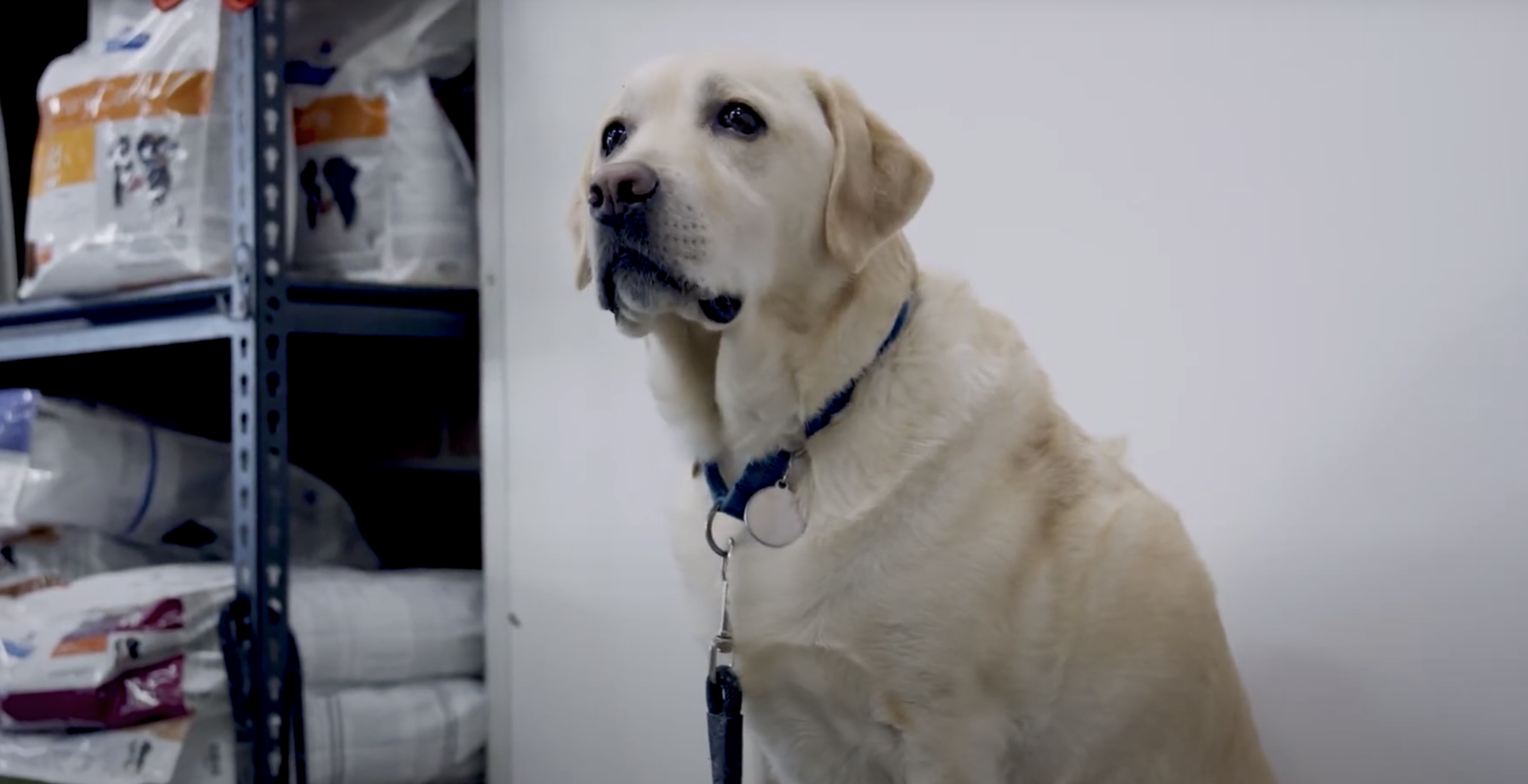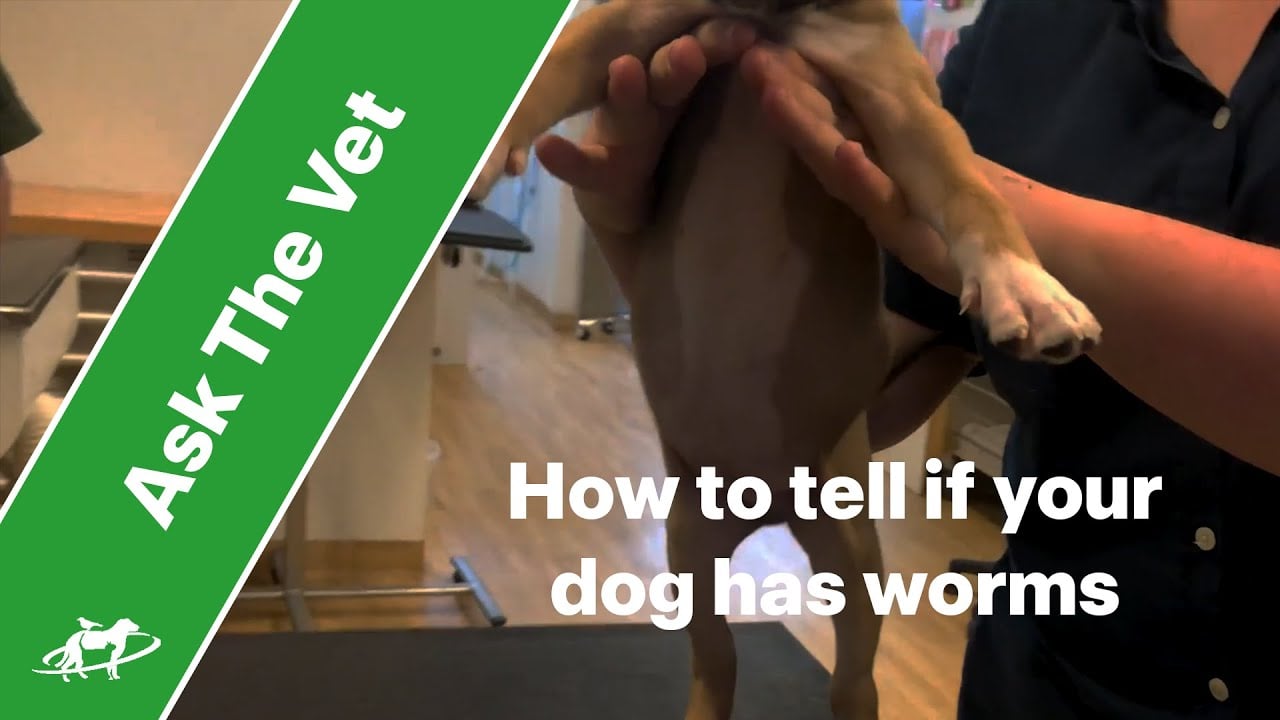In this guide, we delve into effective strategies for managing arthritis in dogs. Arthritis can be a challenging condition for our canine friends, but with the right care, their discomfort can be alleviated. We’ll cover essential steps such as weight management, providing warmth, and pain relief, offering practical advice for each. This resource aims to help dog owners better understand and address the needs of their arthritic pets.
1. Keep them thin like a greyhound
Joints are load bearing structures that bend and deform when forces are applied to them. An arthritic joint becomes less able to deform and absorb the impact of weight bearing forces. This load bearing is transferred to the bony structures resulting in bone remodelling and pain.
The fatter the dog, the higher the forces applied to the joints through weight bearing. Less fat means less forces applied to the joints, less deformation of damaged cartilage, less load bearing by bones and less remodelling and pain.
In many cases once a dog loses weight, they no longer need any other management for their arthritis. I can’t emphasise how important this is: Keep your arthritic dog really skinny!
2. Keep your arthritic dog warm during winter
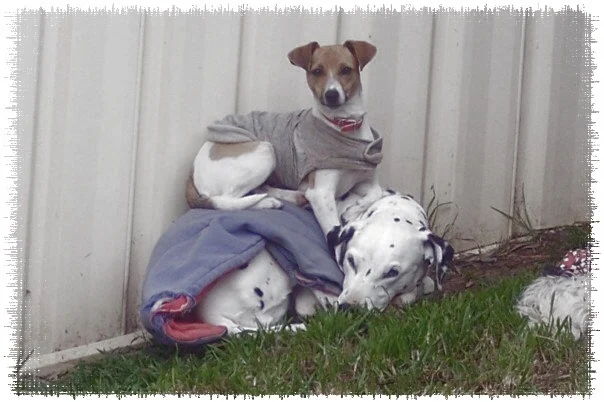
Cold joints get stiff and sore. If your dog has arthritis it tends to worse over winter when it’s cold. By keeping your dog warm you can help to alleviate some of the pain of arthritis.
- For short haired coated dogs or outside dogs put a coat on them
- Move outdoor dogs inside. If you can’t have them inside consider:
- Putting them in a shed
- using the laundry
- how about the garage? or
- could you just bring them inside at night when it’s really cold?
- Insulate their kennel
- Provide lots of bedding and make it soft.
- If your dog drags bedding out of the kennel, put the bedding down just before you go to bed and get it out (or collect it from the middle of the lawn 😉 ) just after you get up in the morning
3. Soft, Comfortable Bedding
A good night’s sleep can make all the difference. A bad night of sleep can make things 10 times worse!
The type of bedding your dog has can make a big difference to their arthritic joints. Bedding:
- keeps your dog warm
- reduces pressure on their skin
- can conform to the body and assist with taking the pressure off painful joints
If you have a well behaved dog that will not chew up their bedding you’re in luck! The choice is easy for you. Your dog needs an egg shell cup foam bed. This is lumpy foam which has a pattern like an egg carton. There are many dog beds that can be purchased with this foam in it now or you can buy the foam from Clark Rubber and make it yourself. The foam conforms to the shape of your dog and really relieves pressure on the joints.
If your unlucky enough to have dogs silly enough to chew up bedding or pull it out of their kennel (My dogs love getting new bedding to rip up- it’s so much fun!) then I do not recommend using foam bedding. Instead you can use a combination of blankets or old towels and use a PVC tubular rubber matting underneath the blankets. The rubber matting still provides them with some cushioning and warmth but is harder to chew up and get out of the kennel. I like it because it’s soft, warm and very durable. I’ve had the mats my dogs have now for about 20 years or more.
Carpet off cuts can also make a very economical and practical choice for dogs that chew bedding.

The picture in this post is of a Snooza Orthobed. This is the type of bed I recommend, you can order them direct from snooza
4. Regular, gentle Exercise
The role of cartilage
Cartilage is a critical part of joints. It is flexible and is able to stretch and deform when load is applied to the joints. If cartilage doesn’t get used it thins out. Thin cartilage can’t deform as much and so more load is transferred to the bone. If the joint is arthritic this is particularly painful.
The importance of exercise
Just like other organs such as muscle if cartilage is not used it wastes away ie. the cartilage becomes thin. Regular gentle exercise is extremely important for maintaining the health of cartilage especially when there are arthritic joints.
Types of Exercise
The types of exercise I’m talking about need to be low impact exercises. Some ideas are:
- a slow leash walk
- swimming (but not running into the water)
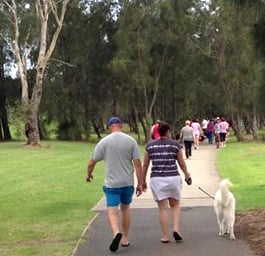
If your dog becomes painful after exercise or pulls up sore the next day then you are doing too much and need to cut back. It’s also not a good idea to exercise during acute flare-ups of arthritis.
The key is to really make sure it is low impact exercise. Chasing balls, frisbees etc can be fun for the dogs but they usually have so much fun that they don’t realise the damage they are doing to themselves until it’s all over and they calm down. We have to have the foresight to decide an activity is not good for them and should be avoided.
Having said that, if your dog is obsessed with ball chasing it may be necessary to make a compromise and still throw the ball but limit the activity. It’s a matter of knowing what’s important for your dog’s quality of life.
5. Treating Pain
Arthritis is a painful condition
Sure your dog is not howling in pain but dogs aren’t like that. They might be wagging their tails looking to you for attention but that doesn’t mean they are not in pain.
Make no mistake about it, If your dog limps or is stiff when they get up they are in pain!
Because dogs walk on 4 limbs not 2 it takes a lot more pain for them to limp than it does for us to limp. By the time they become lame they are at a much advanced level of degeneration than us weak 2-legged animals.
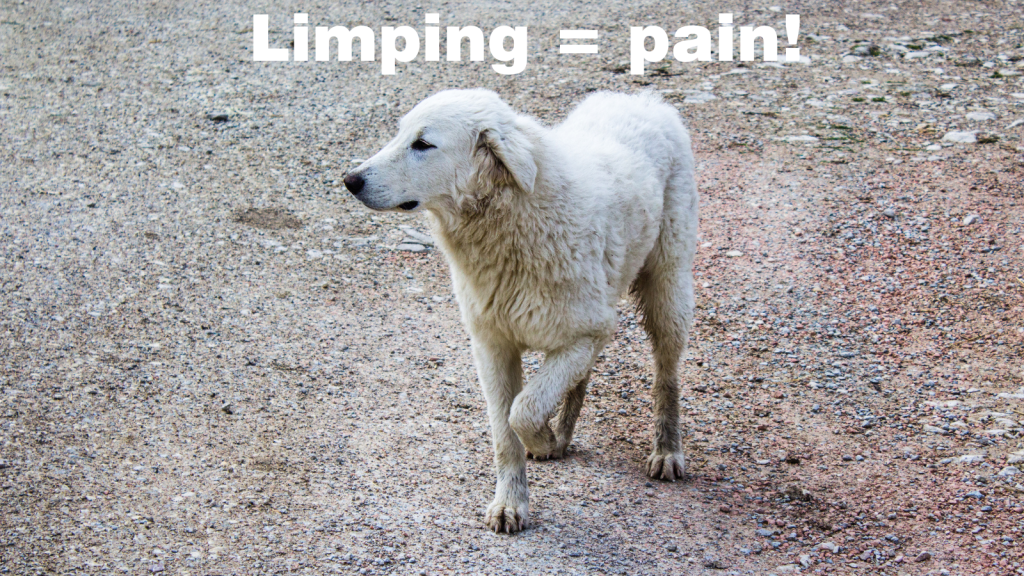
Using pain relief
Pain relief is really important and should never be overlooked. There are lots of options available.
Most commonly I use non-steroidal anti-inflammatory drugs (NSAIDs). Sometimes it is necessary to try some different NSAIDs to find one that works as individual animals often respond differently to different NSAIDs. There can be side effects from these medications. The most common side effect is gastrointestinal upset (vomiting &/or diarrhoea). NSAIDs are generally not suitable for animals with kidney disease and in these cases alternative medications should be used.
The most important thing to remember here is that arthritis is a painful condition and therefore pain relief is necessary.
6. Disease Modifying Osteoarthritic Drugs (DMOADs)
What are they?
There are a number of DMOADs available for use in dogs. The original product available was Cartrophen injections which contain pentosan polysulfate. Since then several generic version have come on the market and there are now several newer generation drugs such as Zydax Gen II and Synovan which have been enhanced to improve their beneficial effects.
How do they Work?
These drugs work by preventing, reducing and in some cases restoring the damage to cartilage caused by osteoarthritis.
DMOADs work by:
- Stimulating cartilage producing cells to produce healthy cartilage
- Slowing cartilage damage by destructive enzymes
- Stimulate cells in the joint capsule to produce more lubricating joint fluid
- Reducing swelling and blocking inflammation
- Improving blood flow and nutrition to the bone and cartilage
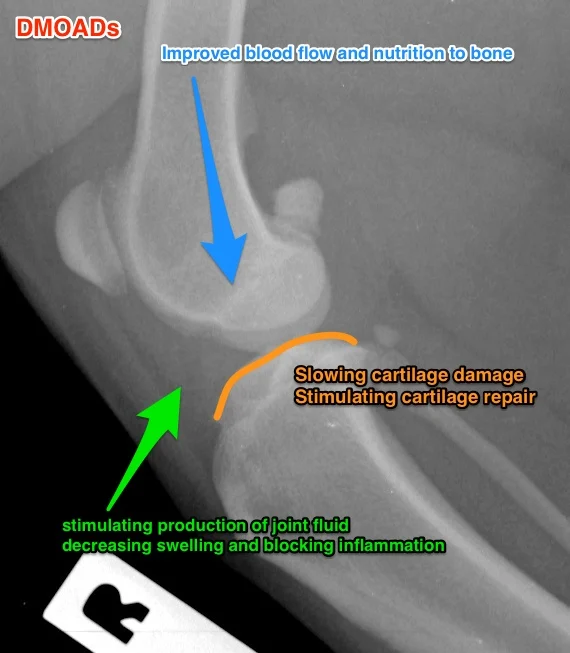
How are they given?
DMOADs are given as weekly injections for 4 weeks under the skin. They are painless and there are very few if any side effects. DMOADs work best if given before the joints become too painful. Once the joints are painful alot of the arthritic changes are already irreversible.
In dogs that are just a little stiff after laying down DMOADs can have a dramatic effect alone and people often reports that their dog “feels like a puppy again”.
If the arthritis is advanced we will generally still give the injections are they are beneficial but the improvement is not as marked as it is earlier in the course of the disease.
The injections are generally repeated every 6 months.
7. Nutritional Supplements
There is no conclusive scientific evidence to prove that any arthritis supplements work, so why bother?
There are some theoretical beneficial effects to these supplements and they may reduce the need or even enhance the effect of other medications. For example we use synovan injections which are a combination of pentosan and chondroitin. There is good evidence that this combination works better than pentosan alone.
- They do no harm.
- They are all safe to use as long as your dog is not allergic to seafood and doesn’t have diabetes
- They provide building blocks for healthy cartilage so may prevent or slow the onset of osteoarthritis.
What are they?
All of the available supplements contain some combination of these ingredients:
- chondroitin – a sugar derived from cartilage that is a building block for the big long sugars that give cartilage it’s elasticity
- glucosamine – as per chondroitin
- green lipped muscle – used for an anti-inflammatory effect
- omega 3 fatty acids supplementation – used for anti-inflammatory effect
- sea cucumber – potential anti-inflammatory effects
- msm – anti-inflammatory effects possible
Where do they come from?
Chondrotin, glucosamine, green lipped muscle, and sea cucumber are all derived from animals from the sea. It is extremely important to me that the raw materials are sourced from sustainable fisheries.
I don’t see the point in killing sharks so we can use their cartilage as a supplement in our pets with no proven benefit.
We do not stock products at Companion Animal Vet Hospital that do not come from a sustainable source. If a manufacturer comes to me with a new osteoarthritis product the first question I ask is where did it come from and is it sustainable.
Some supplements such as Glyde do not use any seafood at all. The chondroitin and glucosamine is instead derived from bovine cartilage.
In what situations should they be used?
The following are the situations where I see benefits in using a supplement:
- prevention of osteoarthritis in at-risk dogs
- hip dysplasia
- joint surgery
- fractures
- bent legs
- dislocating kneecaps
- as part of the treatment of osteoarthritis- they should only be used in addition, not as a substitute to proven methods that are proven to actually work such as pentosan or antiinflammatories.
If costs are a concern the first priority must always be pain relief.
So which one?
- Fat dog with arthritis: Feed a weightless diet and use a supplement
- Thin dog with a no other health problems other than arthritis– feed a complete diet such as Royal Canin Mobility Diet which already has the supplements added to it.
- Fussy dog that won’t change diets: use a dietary supplement such as a powder or treats
Is it really what it says it is?
The nutritional supplement industry isn’t very well regulated so it’s important try use a product which is pharmaceutical grade so that you know what you are getting.
